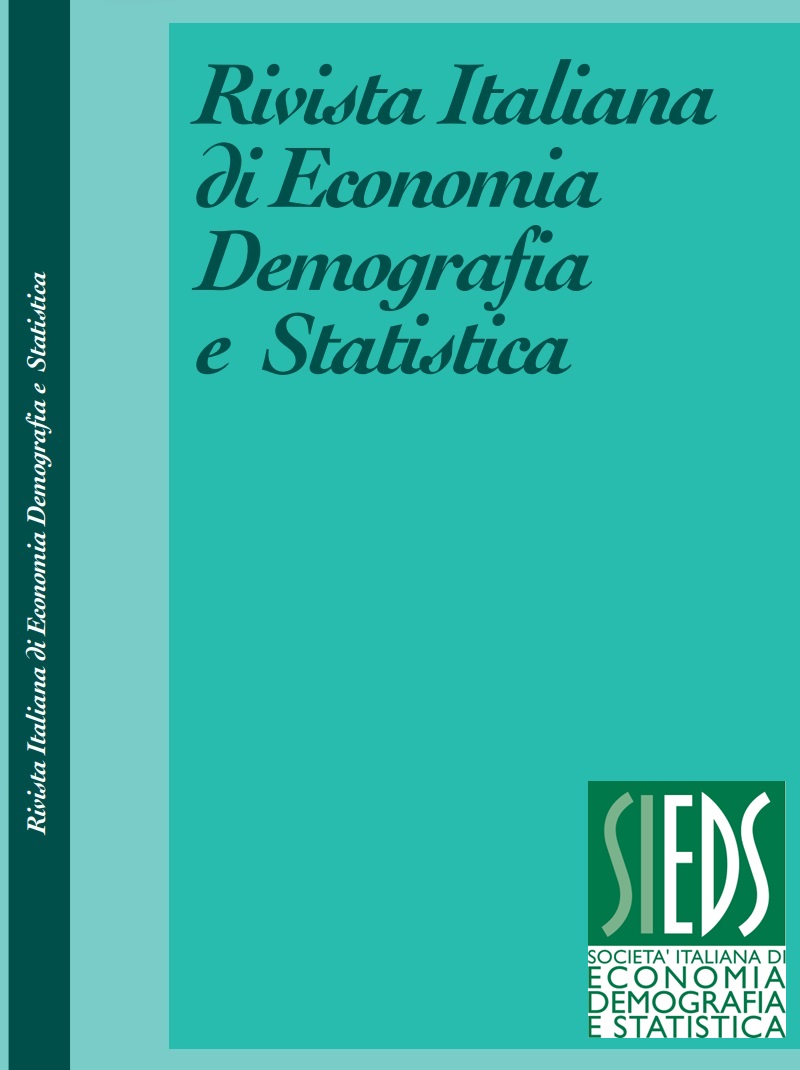Disability free life expectancy decomposition: a comparative analysis across European countries
DOI:
https://doi.org/10.71014/sieds.v78i2.264Abstract
Life expectancies (LE) at birth and at adult ages have progressively increased in recent decades in Europe. LE is a quantitative indicator and therefore it provides a limited view of the status of the population, ignoring the weight and the effects that the health condition has on the years that remain to live. To address this issue, we refer to Disability Free Life Expectancy (DFLE) indicating the average number of years a person of a given age x expects to live in good health. In this paper we analyse the change in LE and DFLE at age 65 from 2004 to 2016 for a set of the most long-lived European countries, as well as for male and female populations in order to highlight gender differences. Then we quantify the extent by which age specific mortality and morbidity contribute to changes in DFLE for understanding whether the trends observed are due to compression/expansion of morbidity or to variation in mortality patterns. This goal is important both for health policies planning and for sustainability of socio-economic and social security systems. DFLE is calculated using the Sullivan method, measuring disability in terms of the Global Activity Limitation Indicator (GALI). We refer both to step-wise and continuous change techniques for DFLE decomposition. Data sources are Human Mortality Database (HMD) for mortality rates and the European Health Life Expectancy Information System (EHLEIS) for prevalence rates. Results show that all the countries under examination present a stronger increase in LE at age 65 for men than for women. A positive variation in DFLE occurs for Belgium, Sweden, Norway, and Finland. A negative gap in DFLE is identified for Italy, Switzerland, and Spain, meaning that people lived longer but in poorer health conditions. Finally, age specific mortality and morbidity contributions to the DFLE gaps are highlighted with an innovative visualization tool that allows to pursue a comparative analysis across countries.
Downloads
Published
Issue
Section
License
Copyright (c) 2024 Mariarosaria Coppola, Rosaria Simone

This work is licensed under a Creative Commons Attribution 4.0 International License.



